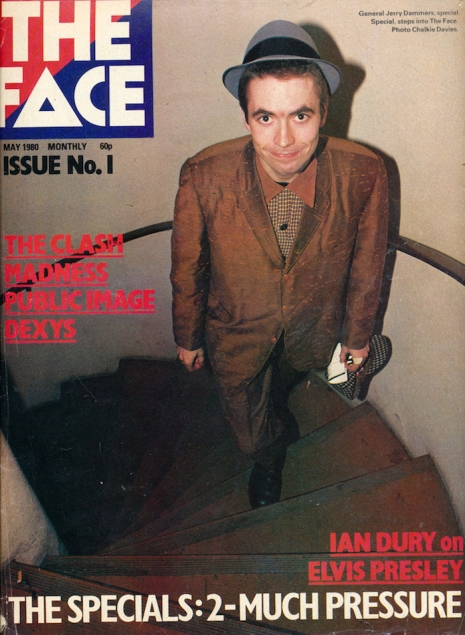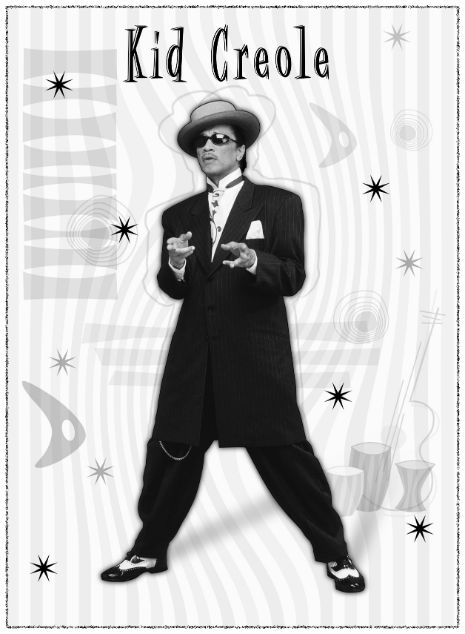
The Specials’ Jerry Dammers on the cover of The Face #1.
I had a weekend job in a small newsagents in Easter Road, Edinburgh, working behind the counter selling papers, magazines, cigarettes, sweets, ice cream and fizzy drinks. You got to know the customers by what they bought. The woman with the Pekinese who always ordered a quarter of Parma violets on a Sunday afternoon. The old drunk who chain smoked in the shop while waiting for the Saturday night sports final. The kids who thought I didn’t see them trying to steal penny chews when my back was turned. It was a fun job. I liked it. The people were good, the work was easy—if the hours long.
Every month a selection of magazines came in—some ordered for customers, some on spec. One month, a new magazine arrived. Glossy, bright, full of articles about music, film, books, politics and fashion. It was like nothing I had ever seen before. This was no cheap youth pop mag. It was well-produced, high quality, beautifully designed (by Neville Brody) with smart intelligent articles by a college of young, sassy writers—Julie Burchill, Charles Shaar Murray, Ian Penman, Paul Morley, and Stuart Cosgrove. The magazine was called The Face. I bought it and placed an order thereafter. This was in May 1980.
The Face was the pop culture magazine of the 1980s and 1990s. No other magazine (or weekly music paper) ever came close to the quality or content of The Face. It was edited by Nick Logan from a small office on Mortimer Street, London. Logan had previously been editor of the NME when he made that paper hip, relevant and essential reading. He then started Smash Hits based around a “vague notion of a kids’ pop magazine.” It proved to be massively popular. Its success allowed Logan to try out another idea—The Face.
The Face was the bible for most late teens-twentysomethings during the eighties. In 1983, I was editing a student magazine. This collegiate journal had been a languishing students’ poetry mag. Inspired by Logan—I reinvented it as a student version of The Face. I filled it with interviews featuring the Fun Boy Three, Annie Lennox, Blancmange, Aztec Camera, Spear of Destiny, The Young Ones, Julie Walters, Neil Jordan, Fay Weldon, Tony Marchant and anyone I thought might of interest to my fellow students. Of course, as a tip of the hat I had to interview Nick Logan, the man who inspired it all. I traveled on an overnight bus to London and arrived in the offices in Mortimer Street. This was how I described him back then:
Nick Logan was born thirty-five years ago in London. He was educated at Leyton Grammar School, London. He left school at the age of fifteen. He is a thin. Smartly dressed. Wears glasses. Not easily impressed—ambitious, modest, talented. An ideas man as much as a leader.
From school Logan worked as a reporter on a local paper, the Walthamstow Guardian. He worked there for five years turning his hand to everything “subbing, proofing, editing and layout” before joining the NME as a staff writer.
I wanted to know about The Face. Logan said:
“The Face is what I would have come up with if I’d had more time at NME. I mean we used to say, ‘What could we do if we owned the magazine?’
“The first issue was started on a kitchen table and half in the corner of somebody’s office. A part of it is still done at home. My house is full of bits and pieces of The Face. You can physically trip over it at home.
“My wife [Julie] looks after back issues, keeps the books, pays contributors.”
The Face had a small staff: only two full-time employees—Logan and Intro/Front Desk Leslie White. There was also designer Brody—who was responsible for “80% of the way The Face looked” and assistant editor Paul Rambali.
The Face was individualistic. It didn’t try to compete with the weekly music press.
“There would be little point in that anyway. What we try to do is offer an alternative view or take a different line on a subject which others might cover as well.
“What interests The Face is very much what interests the staff of The Face—though that’s not to say we approve (if that’s the right word) of everything we report on.”
Each issue took four weeks to produce. The first week the staff recovered “shell-shocked from finishing the last one” and started planning the next one. Features were commissioned by the second week. Then the layout began. During the third week pages were proofed, photos reversed.
“In the fourth week: I disappear to the typesetter in Kilburn so I don’t have the hassle of people coming in. Then Leslie and Paul come down and give a hand. It’s bloody hard work. I’ll finish about six. Eat. Go home and work till twelve or one. That’s when it gets particularly nasty. You’re no longer living. You feel totally worthless. Useless. You can say it’s only one week—-but doing it after 37 issues you feel really bad.
“The short-term ambitions are to get a few extra sales. get more ads. Get better features and photos. And more readers. It’s just been standing holding up the wall collapsing.”
It was all worth it. For The Face changed so many people’s lives. I know it changed mine.
Below is a selection of covers from the first 50 issues of The Face. Check out pages from The Face here.

Paul Weller #2.

Bryan Ferry #3.
More choice covers from the first 50 issues of The Face, after the jump…






